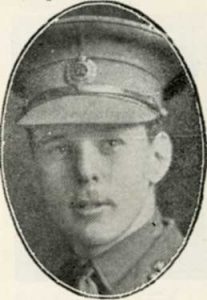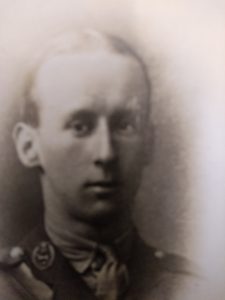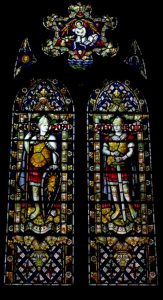Family and Early Life
Edward and Henry were the sons of Robert Colver and Elizabeth Dransfield who was born in Liverpool. Robert was the son of William Colver, a builder, and his wife Elizabeth.
Around 1860, Robert joined his uncle Edward on the latter’s farm at Ecclesfield and initially trained as a land agent. However, after about 12 years in this profession, and maybe through connections he had made, Robert changed tack, joining Joseph Jonas in his firm that made steel and tools.
Elizabeth had been born in 1857 in Ireland and had spent her childhood in Liverpool. Her father was a civil engineer who, at the time of the 1881 census, was described as a railway contractor employing 90 men as well as being a Captain in the Artillery Volunteers.
Robert and Elizabeth were married in the summer of 1876 in Bootle and a notice in the Sheffield Independent described Robert as being ‘of Taptonville’. In early 1887, the Sheffield Telegraph, reporting on the disastrous fire which destroyed the original church at Ranmoor notes that Robert was ‘one of the wardens.’
Robert and Elizabeth established themselves amongst the prominent members of Sheffield society. He was elected Master Cultler for the year from September 1890 and at the inaugural feast, the principal guest was the Duke of Norfolk. He was an Alderman and a Magistrate.
Robert and Elizabeth were a successful couple and it was into this prosperous and influential family that Edward (b 22nd October 1891) and Henry (21st May 1890) were born.
Moving to Ranmoor
By the spring of 1891, when Henry was ten months old (he was born on the 21st May and was the youngest of seven) the family had moved to Rockmount a large house on Fulwood Road near its junction with Gladstone Road. This large family was looked after by a staff of seven. Robert was recorded as a ‘Steel Manufactr Employing 25 Men & 4 Boys’ and was also a director of J and G Wells and of a colliery company at Eckington.
The family was not immune to tragedy. Arthur, the third child, was a pupil at Uppingham School. On 26th February 1907, the Sheffield Telegraph reported that “the death of Mr Arthur Colver … came as a painful surprise to all who knew the young gentleman …” and that the funeral had taken place at Fulwood on the day before. The eldest child, William Dransfield , had been injured on a playing field at the school in Germany that he attended. This had led to him being unable to work and to his early death in 1908.
Education
At the start of the twentieth century, Henry was boarding in a small school at Ashover which is between Matlock and Chesterfield but at some time he was enrolled at St Anselm’s School which is above Bakewell. The rest of the family was at Rockmount, still supported by seven servants. Henry was, probably erroneously, included with the family.
Edward followed his brother to St Anselm’s and both young men progressed to Wellington College. Henry returned to Sheffield after leaving the College and began work in the company owned by his father in partnership with Joseph Jonas. Edward was able to spend a year studying in Europe before gaining employment with ‘Messrs. William Beesley and Co. Universal Steel Works’ according to his obituary in the Sheffield Daily Telegraph. This was a company owned by Jonas and Colver.
Young Adults
The Colvers were cosmpolitan young people with friends from as far afield as Berlin. They went shooting at Moscar Lodge, were proficient horse riders and had access to motor cars.
Edward and Henry ware in Berlin in March 1910 when news reached them that Charlotte was engaged to Joseph Beckett. Joseph Jonas (the business partner of Robert) was also in Berlin and wrote to congratulate Charlotte, reporting that ‘Harry and Eddy have been to dine with me tonight and we made your health the toast of the evening and all drank it heartily (Even Eddy)’. Jonas went on to say that ‘I shall be seeing the Ehrhardts and other of your friends here so I shall be able to give them the news.’
By 1911 Edward and Henry were living again at Rockmount. This was the year their grandmother celebrated her 100th birthday.
Edward was technically adept, creating scale models of engineering constructions and of aeroplanes an ‘one of the most promising members of the Sheffield and District Model Aeroplane Society’. He created a rifle range in the garden at Rockmount and encouraged the local Boy Scouts to use it to become proficient in shooting. His sisters were leaders with the local Girl Guides.
Before the outbreak of the war, Edward took up a commission. in the 455th (West Riding) Field Company, Corps of Royal Engineers, which was part of the Territorial Force. Likewise, Henry was appointed a 2nd Lieutenant in the 5th Battalion of the York and Lancaster Regiment. This was a also erritorial battalion.
In January 1914 a newspaper report described how ‘a big car’ was being driven by Henry along the Bakewell road when it skidded and turned around twice before demolishing a wall. The cause, apart from speed, was that the rear tyres were ‘ripped off.’ Neither the absence of tyres nor damage to the vehicle prevented Henry from continuing his journey.
Letters
We are fortunate that Charlotte, a sister of Edward and Henry, kept letters that her brothers wrote home whilst they were on active service. Charlotte’s granddaughter, Patricia Altham, acquired the letters and transcribed them. Ms Altham has made the leeters available here
War Service – Edward
Early in 1915, with the territorial units allocated to new divisions as the demands of the War increased, Edward was mobilised and was in Warwickshire preparing for deployment. He wrote to his sister Charlotte about the social life: “We are going to have dinner with Lady Willoughby de Broke this evening and on Saturday with the M.F.H. [Master of the Fox Hounds] of the Warwickshire Hunt.” Later he described how “Yesterday afternoon just as we were finishing work the hounds came near the village so the Major, Eric, Bertie and I had our horses saddled and went off for an enjoyable afternoon hunting which we hope to be able to repeat again in the near future.” In a later letter he asks forgiveness for not having written but “We have had a very busy week equipping and I spent all my spare time with Evelyn in Stratford.” Evelyn Seaman was the sister of Wilfred Seaman a friend of the Colver brothers.

Edward Colver
Edward was with the 1st West Riding Field Company Royal Engineers which in March 1915 was sent to the Dardanelles via Alexandria. He took part in the landing on 25th April 1915 of troops from the collier, the S.S. “River Clyde” which grounded off the target beach and came under fierce fire from the defending army. For his actions that day he was he was Mentioned in Despatches.
In another letter, after the debacle of the landing, Edward describes the tribulations of living: “We allow ourselves one wash a day if it is procurable and as we are near the sea can occasionally get a bathe, but as our valises with spare underclothing has gone astray, we haven’t managed a change in that quarter.”
Some idea of the work that Edward involved with comes from Wilfred Seaman who had been at school with Edward and was in the Dardanelles at the same time. In a letter to Robert in France, Seamen says that he had ‘run across Ted’ who was supervising improvements to a culvert and road. Seamen said they, the engineers, had made a great improvement to the camp so that fords and gullies had been bridged, steps made of ammunition boxes had been made down the cliffs and roads laid.
Killed in Action
Edward Watkin Colver was killed in action at Krithia in the Dardanelles, Turkey on 28th June 1915. In a letter to Robert (senior) from Seaman said that ‘Poor old Ted died an instantaneous death, being hit in the right shoulder and chest by shrapnel which appears to have crossed inside the chest to the heart. Seaman goes on to say that he had buried Edward; and adds a personal note of shock and grief: ‘I have lost one of my very best friends …. I am absolutely heartbroken and feel this great loss most awfully – it is a very bitter ending to a long friendship – poor old Ted – he lived a clean and honest life, always worked hard and did his best for everybody.”
Seaman goes on to say that he had helped bury Edward but the grave must have been lost in subsequent fighting so he is commemorated at the Helles Memorial, Turkey.
A Memorial Service was held at Sheffield Catherdral on Saturday October 1915 at
in memory of 2nd-Lieut Edward Watkin Colver, Royal Engineers and others.
From the obituary from Old Wrekian Lives Lost 1914 – 1918 produced on behalf of Wellington College, we know that Edward was engaged to Evelyn Seaman who did not marry after Edward was killed. Evelyn was an executor of Edward’s will.
War Service – Henry
Henry was already in the territorial army with 1/5th Battalion, The York & Lancaster Regiment when war was declared. After camps in Yorkshire and Lincolnshire the Battalion embarked for France in March 1915. Henry was involved in the war in Flanders through the summer of 1915 and into the autumn.
He was a keen amateur photographer and took many pictures, using a pocket Kodak camera, before the War Office prohibited unofficial photography in June 1915. There is an album of Henry’s photographs held at Rotherham Archives (home of the York and Lancaster Regimental Museum) and others survive. His pictures were used by the BBC in a documentary broadcast in 2014. At first there is an air of the subjects going on a great adventure but towards the end the soldiers sit gaunt and hollow-eyed in their trenches. Poignantly one picture shows officers trying on primitive gas masks which were little better than bandages.

Henry Colver
In June 1915, Henry arranged for an illuminated watch to be sent by his mother to his Platoon Sergeant, a man called Medlock. Medlock writes a splendid ‘thank-you’ letter explaining that the watch will mean that he will not have to strike a match to learn the time “because there are times when in striking a light to see the time in the trenches may cost men their lives so you will see what a great help it will be”. Medlock then writes that he and his platoon are ”proud to serve under so fine Officer as your Son.”
Meanwhile, Henry wrote to his family thanking them for the “lovely Ham, bread, and fruit etc” and enclosing a letter from Edward.
On 9th October, Harry was promoted to the rank of Captain.
From letters to his sister, Charlotte, who was living in Hampstead, we know that Harry got leave around the middle of October 1915. He promised to entertain Charlotte and her husband, Joseph, to lunch and promised to bring his girlfriend Mary as well. He was clearly distracted as his letter flits from lunch arrangements to a description of the weather, the shelling and his health. (Mary was the executor of his will.)
On Sunday 19th December, the battalion came under an attack by phosgene gas. Three officers and six soldiers died that morning of phosgene gas poisoning including Captain Harry Colver. He was 25 years of age.
The family received the news of Henry’s death in a telegram which arrived on 22nd December. Henry’s mother received the telegram but suppressed news of its arrival until the dinner party she was hosting was over. With Henry’s death Robert and Elizabeth had lost four of their five sons. The family received a telegram from Buckingham Palace which read: “The King and Queen are deeply grieved to hear that you have lost yet another son in the service of his country. Their majesties offer you their heartfelt sympathy in your fresh sorrow.”
Memorials
There is a window dedicated to Edward and Henry in Ranmoor church. The dedication recites the facts of the brothers’ deaths and finishes with a quote from the Book of Revelation: ‘be faithful unto death and I will give you a crown of life.’

Memorial window – North Aisle of St John’s Church, Ranmoor
There are memorials to both Edward and Henry on the family’s grave in Fulwood Graveyard. The inscription reads:
In Loving Remembrance of Lieut. Edward Watkin Colver
1st West Riding Field Company Royal Engineers 29th Division.
Killed in action at the Dardanelles on June 28th 1915
youngest son of Robert & Elizabeth P Colver aged 23 year
Also of their fourth son Cpt. Henry Colver
1/5 York & Lancaster Regt. 49th Division.
Killed in action in Flanders on December 19th 1915, aged 25 years
Edward is commemorated at the Helles Memorial which is located at the southern end of the Gallipoli Peninsula.
Henry is buried at Bard Cottage Cemetery, Belgium.
